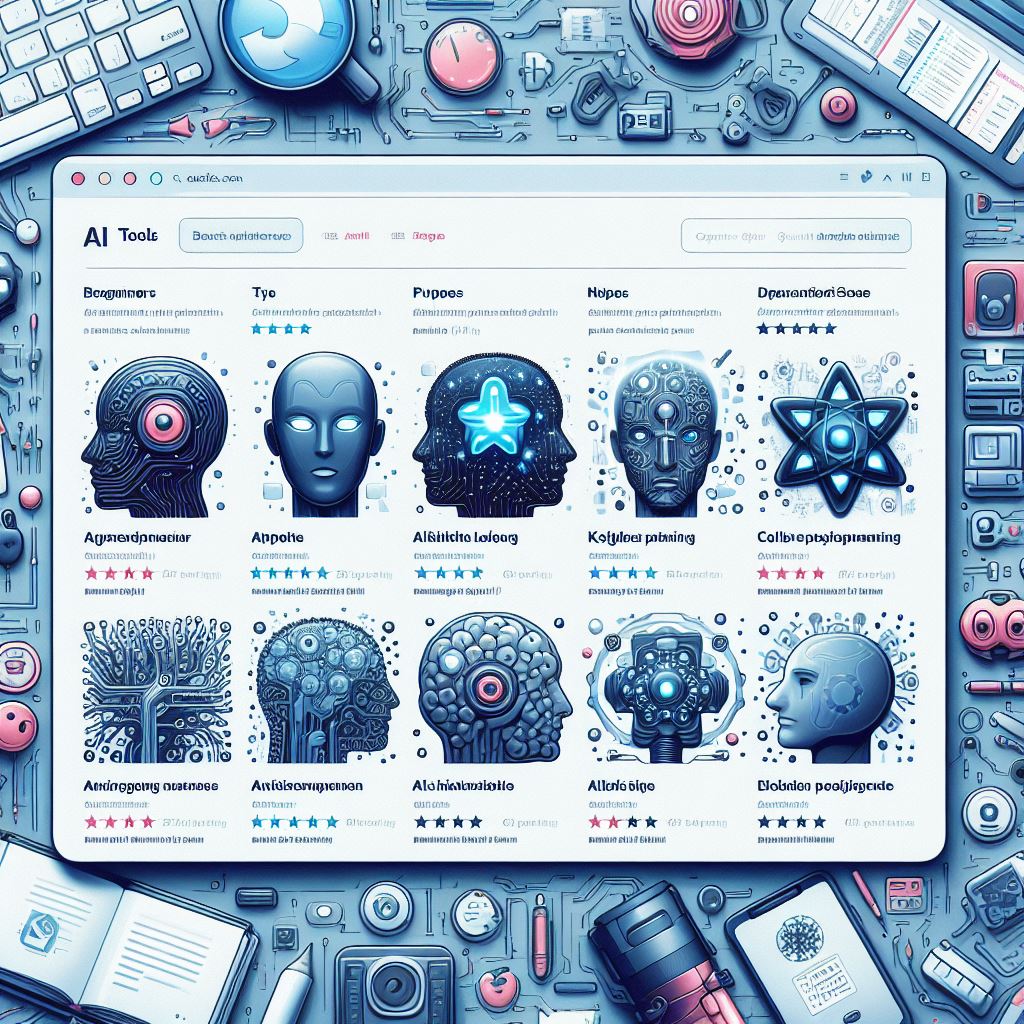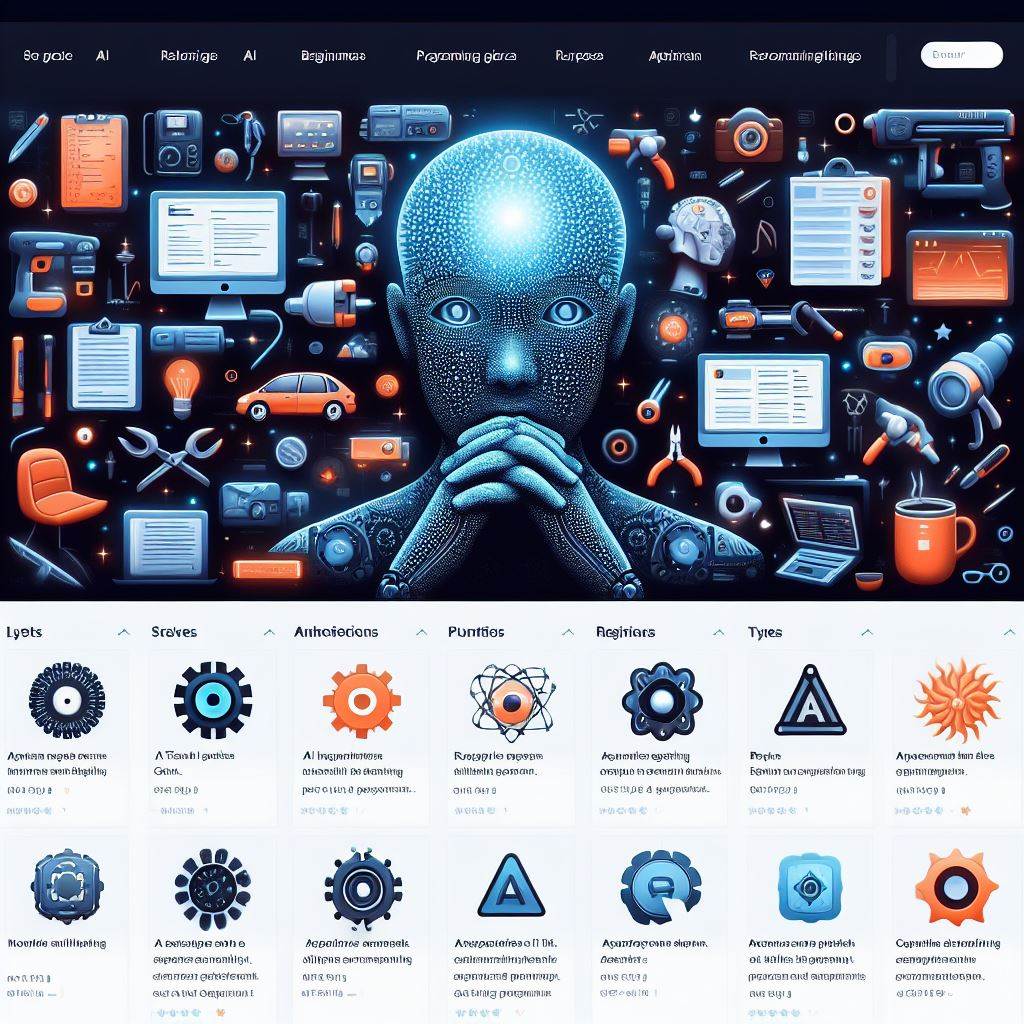Introduction
Best AI tools, is the science and engineering of creating machines and systems that can perform tasks that normally require human intelligence, such as perception, reasoning, learning, decision making, and communication. AI is not a single technology, but a broad and diverse field that encompasses many subfields, such as machine learning, deep learning, computer vision, natural language processing, speech recognition, natural language generation, recommender systems, reinforcement learning, and more. AI has many applications and benefits, such as improving healthcare, education, entertainment, business, and social good. It also has many challenges and risks, such as ethical, social, legal, and security issues. AI is constantly evolving and advancing, thanks to the efforts and innovations of researchers, developers, and enthusiasts around the world. AI is not only a fascinating and rewarding subject to learn and explore, but also a powerful and useful tool to create and solve problems.
Open Source AI Platforms and Tools
One of the best things about AI is that it’s open source. That means anyone can access, modify, and share the code and data behind some of the most advanced AI models and applications. This gives you a lot of flexibility and control over your AI projects, as well as the opportunity to learn from and contribute to the global AI community. Plus, it’s free! Who doesn’t love free stuff, right?
There are tons of open source AI platforms and tools out there, but here are some of the most popular ones that you should definitely check out:
- TensorFlow: This is one of the most widely used open source AI platforms in the world. It was developed by Google and it allows you to build, train, and deploy AI models for various tasks, such as computer vision, natural language processing, and reinforcement learning. It supports multiple languages, such as Python, C++, and Java, and it has a rich ecosystem of libraries and tools, such as Keras, TensorFlow.js, and TensorFlow Lite.
- H2O.ai: This is an open source AI platform that makes it easy to create and deploy machine learning and deep learning models. It has a user-friendly interface that lets you drag and drop data, select algorithms, and visualize results. It also has an AutoML feature that automatically selects the best model for your data and optimizes its performance.
- Bottender: This is an open source framework that helps you create chatbots and conversational AI applications. It supports multiple platforms, such as Facebook Messenger, Telegram, Slack, and Line, and it has a simple and intuitive syntax that lets you design your bot’s logic and flow. It also integrates with natural language understanding services, such as Dialogflow and Wit.ai.
- DeepPavlov: This is an open source library that provides pre-trained models and tools for natural language processing and dialogue systems. It supports tasks such as named entity recognition, sentiment analysis, question answering, and chatbot building. It also has a conversational AI framework that lets you create goal-oriented and chit-chat bots.
- Pandas: This is an open source library that provides high-performance data structures and analysis tools for Python. It allows you to manipulate, clean, and explore large and complex data sets with ease. It also has a variety of features, such as indexing, grouping, merging, reshaping, and plotting.
- Scikit-learn: This is an open source library that provides simple and efficient tools for machine learning and data mining. It supports tasks such as classification, regression, clustering, dimensionality reduction, and feature extraction. It also has a consistent and well-documented API that makes it easy to use and integrate with other libraries.
Cloud-Based AI Platforms and Tools
Another option for using AI is to use cloud-based AI platforms and tools. These are services that are hosted and managed by third-party providers, such as Google, Microsoft, Amazon, and IBM. They offer you access to powerful computing resources, data storage, and AI models and applications without having to install or maintain anything on your own. This can save you time, money, and hassle, as well as provide you with security and reliability.
There are many cloud-based AI platforms and tools available, but here are some of the most prominent ones that you should definitely try out:
- Google Cloud AI Platform: This is a comprehensive and integrated platform that offers a range of AI services and solutions, such as AutoML, AI Hub, AI Builder, and AI Explanations. It allows you to build, train, and deploy AI models for various tasks, such as computer vision, natural language processing, speech recognition, and recommendation systems. It also supports TensorFlow, PyTorch, XGBoost, and scikit-learn frameworks, and it has a unified user interface that lets you manage your AI projects from end to end.
- ChatGPT: This is a cloud-based service that lets you create and deploy conversational AI applications using the state-of-the-art GPT-4 model. It allows you to generate natural and engaging responses for your users, as well as customize your bot’s personality, tone, and style. It also supports multiple languages, such as English, 中文, 日本語, Español, Français, Deutsch, and others, and it has a simple and intuitive API that lets you integrate your bot with various platforms, such as Facebook Messenger, Telegram, Slack, and Line.
- NVIDIA AI: This is a cloud-based platform that leverages the power and performance of NVIDIA GPUs and software for AI. It offers a range of AI services and solutions, such as NVIDIA Jarvis, NVIDIA Merlin, NVIDIA Clara, and NVIDIA Riva. It allows you to create and deploy AI models for various tasks, such as conversational AI, recommender systems, medical imaging, and video analytics. It also supports multiple frameworks, such as TensorFlow, PyTorch, MXNet, and Caffe, and it has a scalable and flexible architecture that lets you optimize your AI workloads.
- Azure Machine Learning: This is a cloud-based platform that provides a suite of tools and services for machine learning and data science. It offers features such as automated machine learning, data labeling, model interpretability, and MLOps. It allows you to build, train, and deploy machine learning models for various tasks, such as classification, regression, clustering, and anomaly detection. It also supports multiple frameworks, such as TensorFlow, PyTorch, scikit-learn, and ONNX, and it has a collaborative and interactive environment that lets you work with your data and models in notebooks, visual studio, or the cloud.
How to Choose the Right AI Platform or Tool for Your Needs
Now that you know some of the best AI platforms and tools for beginners and experts, you might be wondering how to choose the right one for your needs. Well, there’s no one-size-fits-all answer to this question, as different platforms and tools have different strengths and weaknesses, and different projects have different requirements and goals.
However, here are some factors that you should consider when choosing an AI platform or tool:
- Your skill level: Depending on your level of expertise and experience, you might prefer a platform or tool that is more beginner-friendly or more advanced. For example, if you’re new to AI, you might want to use a platform or tool that has a graphical user interface, a drag-and-drop feature, or an AutoML feature that simplifies the process of creating and training AI models. On the other hand, if you’re an expert, you might want to use a platform or tool that gives you more control and customization over your AI models, such as the ability to write and modify code, tweak parameters, and use different frameworks and libraries.
- Your budget: Depending on your budget, you might prefer a platform or tool that is more affordable or more expensive. For example, if you’re on a tight budget, you might want to use an open source platform or tool that is free or low-cost, or a cloud-based platform or tool that has a pay-as-you-go or a free tier option. On the other hand, if you have more money to spend, you might want to use a cloud-based platform or tool that has a premium or a enterprise option that offers more features, support, and security.
- Your goal: Depending on your goal, you might prefer a platform or tool that is more general or more specific. For example, if you want to create a variety of AI models and applications for different tasks and domains, you might want to use a platform or tool that is more general and versatile, such as TensorFlow, PyTorch, or Google Cloud AI Platform. On the other hand, if you want to create a specific AI model or application for a specific task or domain, you might want to use a platform or tool that is more specialized and focused, such as Bottender, DeepPavlov, or NVIDIA Jarvis.

You can also use some tips and resources for learning and comparing different AI platforms and tools, such as:
- Online courses: There are many online courses that teach you how to use different AI platforms and tools, such as Coursera, Udemy, edX, and Udacity. These courses can help you gain the theoretical and practical knowledge and skills that you need to use the platforms and tools effectively and efficiently.
- Tutorials: There are many tutorials that show you how to use different AI platforms and tools, such as TensorFlow Tutorials, PyTorch Tutorials, Google Cloud AI Platform Tutorials, and IBM Watson Tutorials. These tutorials can help you learn the basics and the advanced features of the platforms and tools, as well as how to apply them to real-world problems and scenarios.
- Blogs: There are many blogs that share insights and experiences on using different AI platforms and tools, such as Towards Data Science, Machine Learning Mastery, Analytics Vidhya, and KDnuggets. These blogs can help you stay updated and informed on the latest trends and developments in the field of AI, as well as how to use the platforms and tools effectively and efficiently.
- Forums: There are many forums that provide support and guidance on using different AI platforms and tools, such as Stack Overflow, Reddit, Quora, and AI Stack Exchange. These forums can help you ask questions and get answers from other users and experts, as well as share your ideas and feedback on the platforms and tools.
Conclusion
A comprehensive guide to the most popular and powerful AI platforms and tools for beginners and experts. I hope this blog post has helped you understand what AI is, why it is important, and how you can use it for your projects. I also hope this blog post has helped you choose the right AI platform or tool for your needs. Remember, AI is not a one-size-fits-all solution, but a diverse and dynamic field that offers endless possibilities and opportunities. So, don’t be afraid to explore and experiment with different AI platforms and tools, and find the one that works best for you. You never know what amazing things you can create and achieve with AI.


1 thought on “Best AI tools and Platforms for beginners experts”